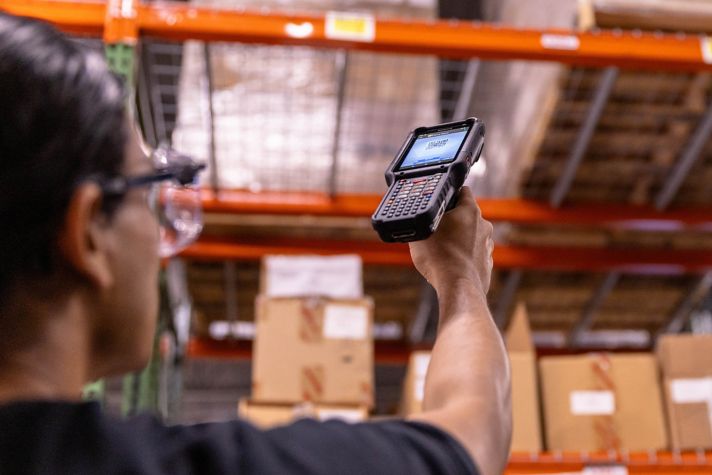What you’ll learn from this article:
- The major operational and safety vulnerabilities in modern healthcare environments
- How integrated technologies can help mitigate these risks and improve patient and staff safety
- Strategic insights into building operational resilience and enhancing patient experience
In today’s healthcare landscape, hospitals are complex ecosystems that must operate with precision, resilience and safety at their core. As healthcare administrators, facilities managers and hospital planners know all too well, ensuring life safety and security is more than just a regulatory requirement.
Here are the top five concerns that are shaping the future of hospital safety and what healthcare leaders need to know to stay ahead:
1. Hospital-Acquired Infections (HAIs): A Threat to Health and Reputation
Hospital-acquired infections remain one of the most persistent and costly challenges in healthcare. According to the CDC, approximately 1 in 31 hospital patients has at least one healthcare-associated infection on any given day.1 These infections not only endanger patient lives but also damage a hospital’s reputation.
Key Considerations:
- Environmental controls like air pressurization, humidity regulation, and temperature monitoring in critical spaces (e.g., ORs, ICUs) are essential to infection prevention.
- Advanced HVAC and airflow management systems can significantly reduce airborne pathogen transmission.
Integrated building systems allow for real-time monitoring and alerts when environmental thresholds are breached.
2. Rising Incidents of Physical Violence Against Healthcare Workers
Violence in healthcare settings is on the rise. The U.S. Bureau of Labor Statistics reports that healthcare workers are five times more likely to experience workplace violence than workers in other industries.2 This growing threat affects staff morale, retention and patient care quality.
Key Considerations:
- Access control systems can restrict entry to high-risk areas such as emergency departments and behavioral health units.
- Video surveillance with analytics can detect unusual behavior patterns and alert security teams in real time.
- RTLS (Real-Time Locations Services) can complement these systems by providing location-based alerts as part of a broader, layered security strategy.
3. Patient Experience and Safety: A Balancing Act
Patient safety is foundational to a positive healthcare experience. From preventing falls to ensuring timely response to nurse calls, every touchpoint matters. In an era where patient satisfaction scores influence funding and reputation, safety is inseparable from experience.
Key Considerations:
- Nurse call systems integrated with building automation can improve response times and reduce alarm fatigue.
- Environmental comfort controls (e.g., lighting, temperature, noise) contribute to a more healing-focused environment.
- RTLS can support workflow optimization to help deliver a more seamless and efficient patient experience.
4. Emergency Preparedness and Operational Resilience
Hospitals must be ready for anything — fires, natural disasters, power outages, or mass casualty events. Downtime is not an option. Yet many facilities still rely on siloed systems that hinder coordinated response.
Key Considerations:
- Unified platforms that integrate fire alarms, access control, and surveillance enable faster, coordinated responses.
- Real-time collaboration tools ensure that emergency teams can communicate and act without delay.
- Resilient infrastructure, including redundant power and secure communications, is critical to maintaining operations during crises.
5. Cybersecurity Threats to Operational Technology (OT)
Cyberattacks are no longer limited to data breaches. Increasingly, attackers are targeting operational technology — the systems that control HVAC, fire alarms, access controls, and more. A successful attack could shut down critical infrastructure, putting lives at risk.
Key Considerations:
- Cyber vulnerability assessments help identify and mitigate risks to systems like HVAC, fire alarms, and access control.
- Predictive cybersecurity tools can detect anomalies before they escalate into full-blown attacks.
- OT cybersecurity is no longer optional — it’s a foundational layer of hospital safety.
Final Thoughts: A Call to Action for Healthcare Leaders
The safety and security of hospital environments are under more pressure than ever. From infection control to cyber resilience, the challenges are complex but not insurmountable. By taking a proactive, integrated approach to life safety and security, hospitals can protect what matters most: their patients, staff and reputation.
Looking to learn more about how to build a safer, smarter hospital? Explore our Healthcare Life Safety and Security eBook.
1. Centers for Disease Control and Prevention (CDC). “Healthcare-associated Infections.” https://www.cdc.gov/healthcare-associated-infections/php/data/.
2. U.S. Bureau of Labor Statistics. “Workplace Violence in Healthcare, 2018 | April 2020.” https://www.bls.gov/iif/factsheets/workplace-violence-healthcare-2018.htm.




